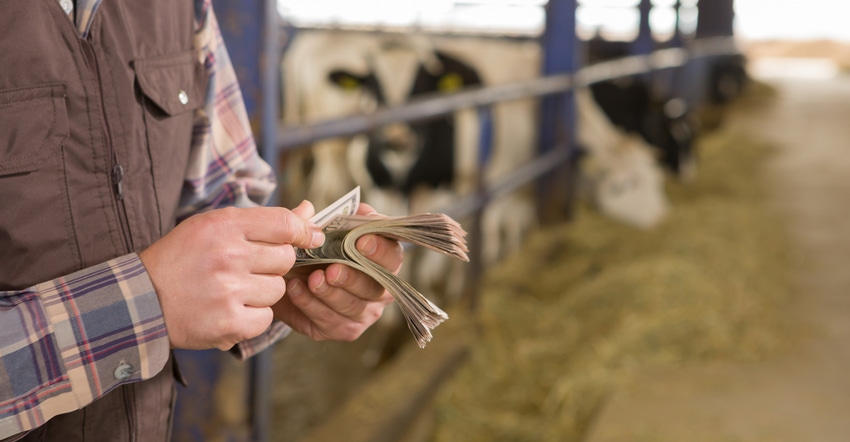November 8, 2021

Using your financial ratios to make management decisions for your farm or ranch business makes a big difference. In perfect competition, farm business management decisions are crucial for sustainability, yet the decision-making process is challenging in today’s ag environment.
The North Dakota Farm Management Education program provides one-on-one lifelong learning opportunities in economic and financial education. Instructional assistance focuses on helping producers understand their financial numbers and why they are essential to management decisions.
According to the current updates on financial ratios from Farm Financial Standards Council, experts surveyed recommended that farmers and ranchers consider 13 financial ratios to gauge the health of their operations as they make management decisions. These ratios are the outcomes of the financial information from a business operation, each of which provides unique information to support good decision-making.
These ratios are the vital signs of your business and offer a tremendous amount of information about the business’s performance. This article will explore the five most basic, yet crucially important, ratios commonly used for farm business management.
1. Current ratio. This ratio is the standard measurement of a business’s financial health. The current ratio equals current assets divided by current liabilities. The current ratio for a healthy farm is 2 or above, meaning twice as many assets as liabilities. In other words, for every $1 you owe in the short term, you have $2 with which to settle that obligation. The current ratio should be part of your business’s primary financial planning, and used monthly or quarterly.
Closely keeping track of this figure allows you to take early action to prevent business hardships. The grain in the bin is equivalent to the operating loan in many farms, creating challenges where margins are often squeezed. Therefore, pay close attention to this to manage your production risk, rather than liquidating your fixed assets to appease your bank’s perception of valuation risk.
2. Total asset turnover ratio. This is the most helpful number for small-business management decisions, because most of us want to know how efficiently a farm business generates sales on each dollar of assets from an operation. To get the total asset turnover ratio, take the total value of farm production and divide by the total of average farm assets.
Farm and ranch business owners should target a total asset turnover ratio of 40% to 50% or above. Every month, you should review this ratio to compare it with the regional average because this is your basic scorecard. Today’s farming and ranching operations require many assets to generate sales; thus, if you want to know how efficiently you use your assets, this financial ratio provides the information you need.
3. Operating profit margin ratio. This ratio helps when the business is experiencing a cash flow crunch due to inadequate markups. In other words, this ratio indicates how profitable the farm operation has been during a specific period. The formula for the ratio follows: 100% × (net farm income + interest paid – charge for operator and unpaid labor – charge for management) / (gross farm income).
A 15% or above ratio is a sign of a healthy business, and checking this ratio monthly, or at least quarterly, is advisable because it signals cash flow problems before they become urgent. Unfortunately, it is common for small businesses to ignore the operating profit margin ratio and end up losing their margin and becoming insolvent.
Don’t wait until the end of the year to determine your operating profit margin ratio. The key is to track the trends in this ratio as frequently as possible to decide whether or not you need to adjust your marketing strategy to improve your profit margin.
4. Farm debt to equity ratio. This is yet another critical ratio observed by lenders when deciding whether to issue an additional loan or initial round of financing. To figure out the ratio, take the total debt and divide by the total equity. The ratio for a healthy farm should not be above a level of 1. Thus, this is a critical ratio to watch and observe every quarter (or at least annually) if you want to borrow more money from your lender.
In addition, equity and debt are two key figures in the financial statement, because lenders and investors usually use these figures and their relationship to analyze the farm financial risk. The higher the ratio, the greater the risk to the creditor. At the bottom line, too much debt can put your business at risk, but too little debt may prevent your business from reaching its full potential by hurting overall profitability.
5. Term debt coverage ratio. Lenders also consider this ratio. To find the ratio, take the net operating income and divide by the debt service. Most lenders like to see this ratio greater than 1.5. If the ratio is 1, this means the business can pay the payment at least once every month or quarter, depending on the loan terms and conditions. From the lender’s standpoint, this ratio helps to determine the business’s repayment ability. For the business owners, this ratio helps assess if there is adequate cash to make payment on the current loan.
For its clients’ financial analyses, the North Dakota Farm Management Education Program can put a client’s financial information into its Finpack software and calculate the financial ratios. Afterward, a client’s ratios can be compared to regional or state averages. For more information, visit ndfarmmanagement.com.
Bardach is with the North Dakota Farm Management Education Program, which provides lifelong learning opportunities in economic and financial management for those involved in the farming and ranching business.
You May Also Like




